What is keyword density?
Keyword density refers to the number of times a specific word has been used or appeared in a blog or webpage. Let’s understand this with a simple example. Let’s say you’re telling a story about your favourite food, pizza. If you keep saying “pizza” over and over again, your friends might notice that you’re really obsessed with pizza!
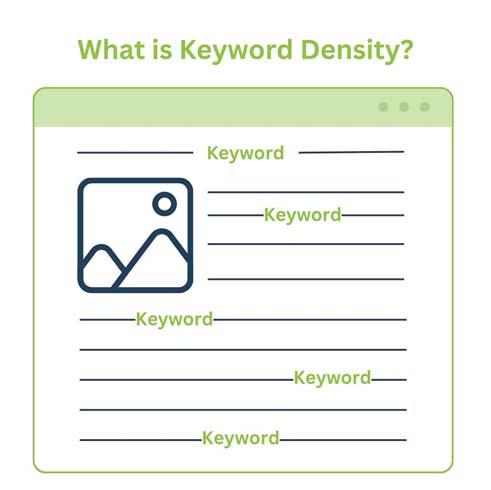
Now, think of a webpage as a story about something, and the keyword is like the main word you’re talking about, just like “pizza” in your story. Keyword density is how many times that main word, or keyword, shows up compared to all the other words in the story. It’s like keeping track of how often you say “pizza” compared to all the other words in your story.
If you say “pizza” a lot in your story, then the keyword density is high. But if you only mention it a few times, then the keyword density is low. So, the more times your keyword appears in your webpage compared to all the other words, the higher the keyword density. It’s kind of like showing how much you really want people to know about that topic on your webpage!
How do you calculate keyword density?
Keyword density shows how often a word appears on a webpage. To find it, count how many times the word shows up. Then, count all the words on the page. Divide the number of times the word appears by the total words. This gives the keyword density, showing how much focus is on that word.
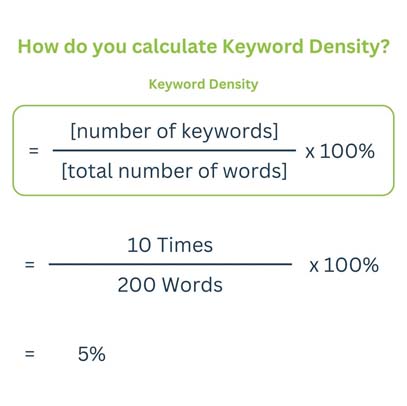
Note: A picture which contains the keyword density formula
Why does keyword density matter?
Think of keywords as key words or phrases that people type into search engines like Google when they’re looking for something. If your website has those same keywords, it’s more likely to show up in their search results.

But using keywords isn’t just about stuffing your website with as many as possible. That won’t work. Search engines are smart—they want to show people the best and most helpful websites. So, it’s important to use keywords naturally and in relevant places, like in your website content and page titles.
When you research and choose the right keywords for your website, it’s like putting up signs that guide people straight to you. It helps your website stand out and attract more visitors. Plus, when people find what they’re looking for on your site, it can lead to more sales or interactions.
Even though search engines consider other things like where you are or how popular your page is, keywords are still super important. They’re like the secret code that helps your website get noticed in the big online world.
What is keyword stuffing?
Keyword stuffing used to be a sneaky trick some websites used to try to fool search engines like Google into ranking their pages higher. They’d cram their content with the same keyword over and over again, hoping it would make their site look more relevant. But it didn’t work for long.

Back in the early days of search engines, companies would stuff their web pages with keywords and links, thinking it would boost their rankings. But it didn’t make for good reading. Visitors got frustrated with low-quality content that seemed like it was just there to manipulate search results.
Search engines caught on pretty quickly. They realized that keyword stuffing made for a bad user experience. So they changed their algorithms to penalize websites that used this tactic. Now, if a site stuffs its content with keywords, it’s more likely to get pushed down in search results rather than move up.
The lesson here is that quality matters more than quantity. Instead of trying to game the system with keyword stuffing, it’s better to focus on creating valuable content that people actually want to read. Search engines are getting smarter all the time, and they’re more interested in showing users helpful and relevant results. So, if you want your website to rank well, it’s important to provide real value to your audience, rather than trying to trick the algorithms with outdated tactics like keyword stuffing.
How many keywords should one use?
Deciding on the right number of keywords for your content isn’t an exact science. It depends on what kind of content you’re writing and what you want to achieve. Let’s break it down.
Imagine you’re writing an article or a blog post. It’s like telling a story. You want to make sure people can find your story when they search for certain words on the internet. These words are your keywords. But you don’t want to use too many of them. If you stuff too many keywords into your story, it becomes hard to read and doesn’t make sense.
So, here’s a rule of thumb: for every 200 words you write, it’s usually okay to use one keyword. That means if you have a 200-word paragraph, you can use one keyword in it. This keeps your writing natural and easy to understand. It also helps search engines like Google find your content and show it to people searching for those keywords.
But remember, this rule can change based on what you’re writing. If you’re writing a short news article, you might need fewer keywords. If you’re writing a longer blog post or webpage, you might use more keywords, but you still want to keep it balanced and not overdo it.
So, while there’s no exact number of keywords you should use, sticking to about one keyword per 200 words is a good guideline to follow. It helps your content rank well in search engines while still keeping it reader-friendly.
What is a keyword variant?
Keyword variants are variations of a main keyword that users might use when searching for something online. For example, if someone is looking for “used cars for sale,” they might also search for “second hand vehicles for sale” or similar terms. These variations have the same intent – finding and possibly buying a used car – but they use different words.
To make sure your website shows up for all these variations, it’s essential to target keyword variants. This means including different but related keywords in your content. You can find these variations by looking at the “Searches related to” section at the bottom of search engine results pages (SERPs). These are actual searches made by users, so they’re valuable for finding new keywords to target.
However, using keyword variants isn’t just about stuffing your content with as many different keywords as possible. You need to be careful because too many keywords can make your content look spammy and harm your website’s ranking. Instead, aim for one keyword or variant per 200 words of content. This ensures that your content remains readable and valuable to your audience while still targeting a wide range of search terms.
For example, if your website is about hotels, you might include variations like “cheap hotels,” “budget accommodations,” or “affordable lodging” to attract different types of visitors. But you wouldn’t want to include every possible variation on a single page – instead, spread them out across your site in a natural and relevant way.
In summary, using keyword variants can help increase your website’s visibility and attract more visitors, but it’s essential to use them strategically and avoid overusing them. By targeting a variety of related keywords and incorporating them into your content thoughtfully, you can improve your chances of ranking well in search engine results while still providing value to your audience.
What is a good keyword density?
Keyword density, or the number of times a keyword appears in your content compared to the total word count, is a crucial aspect of SEO. While there are no strict rules, many experts suggest using 1-2 keywords for every 100 words of text, which equals to about 1-2% keyword density. However, Google and other search engines generally prefer a keyword density of around 0.5%.
But don’t just focus on one keyword – consider keyword variants too. These are similar words or phrases related to your main keyword. For example, if you sell outdoor lighting, instead of overusing “outdoor lighting” on every page, use variations like “garden lighting,” “patio lighting,” or “landscape lighting.” This helps your page rank higher without breaking the rules against keyword stuffing.
To find relevant keyword variants, look at the “searches related to” section at the bottom of Google’s search engine results page (SERP) for your main keyword. This section shows what other terms people are searching for related to your keyword, giving you valuable insights into what variations to include in your content. By incorporating these keyword variants naturally into your content, you can improve your SEO without risking penalties from search engines.
What is keyword clustering?
In the realm of Google’s search algorithms, relevance reigns supreme. While it’s crucial to steer clear of overloading web pages with keywords, Google’s algorithms are smart enough to recognize groups of related keywords within content, a concept known as “keyword clustering.”
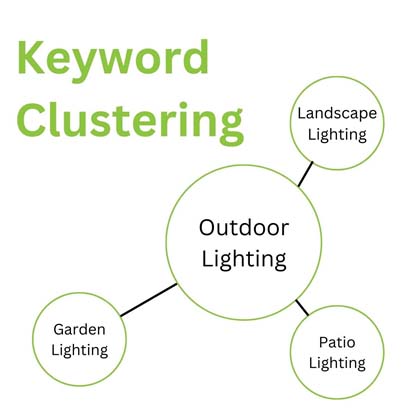
Here’s how it works: When Google’s software programs, called spiders, crawl through webpages, they don’t just spot individual keywords in isolation. Instead, they analyse how keywords relate to each other and to the surrounding content. This means that Google expects certain keywords to appear together, providing context to what the content is all about. Clustering relevant keywords together can significantly boost visibility in search results.
For instance, if you search for the tallest buildings in the United States, Google will display a carousel of images with each building’s height listed. The top organic search result usually leads to Wikipedia’s entry for the tallest buildings in the U.S. due to its strong link profile.
Imagine you’re a content marketing manager for an architectural firm. You want your blog post about America’s tallest skyscrapers to rank high. Google anticipates seeing keywords like “One World Trade Center” in content discussing tall buildings in the U.S. Additionally, it expects to find other related keywords clustered together, such as names of other notable skyscrapers.
Crafting content that includes these contextually relevant keywords in clusters can significantly enhance its relevance and visibility. By doing so, you’re not only providing valuable information but also aligning your content with what Google expects to see, ultimately improving its chances of appearing prominently in search results.
Keyword density tools
Keyword density tools are invaluable resources for website owners looking to optimize their content for search engines. While manually calculating keyword density can be time-consuming, these tools streamline the process, allowing you to analyze keyword usage across your webpages more efficiently.
SEO Review Tools Keyword Density Checker- which is free and accessible via your browser. Simply enter your website URL or page text, complete a captcha, and you’ll receive an overview of your keyword density. This tool highlights keywords with unusually high appearances, making it easy to identify those that need adjustment. Additionally, it provides keyword breakdowns by word count and allows you to exclude certain phrases.
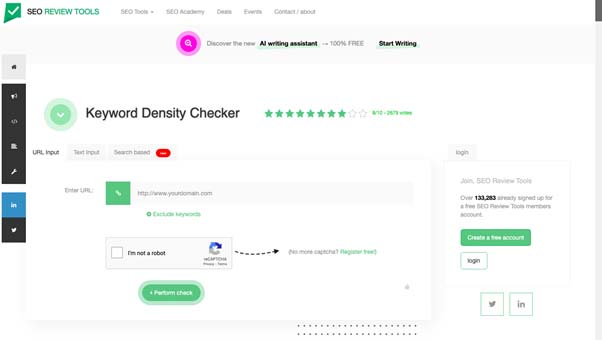
SEO Book Keyword Density Analyzer- also free but requiring an account. This tool not only offers basic density reports but also allows you to compare your keyword usage with that of the top-ranked pages on Google. You can customize your analysis by including meta information, excluding common “stop words,” and setting minimum word length criteria.

For those seeking simplicity, the Copywritely Keyword Density Checker is a user-friendly tool that displays top keywords by density and color-codes frequently occurring terms. While it lacks options to exclude stop words or include meta descriptions, it provides a quick and easy way to check keyword density.
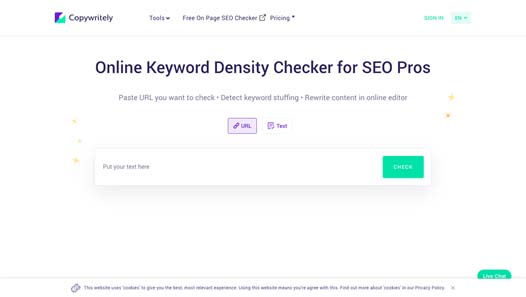
For more comprehensive SEO analysis, Semrush’s On-Page SEO Checker offers a suite of features, including a keyword density checker named “keyword phrase usage.” This premium tool not only assesses keyword density but also provides automated SEO checkups, competitive keyword comparisons, backlink prospecting, and detailed site audits.
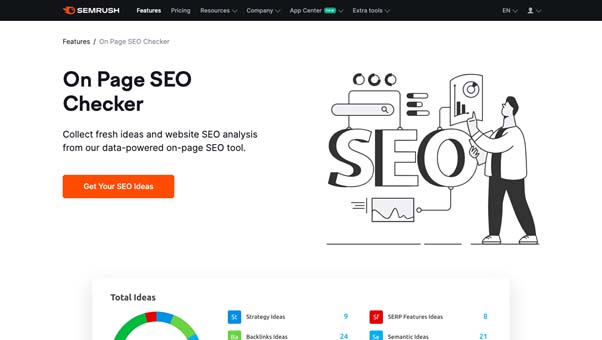
The advantage of using these tools lies in their ability to provide actionable insights into keyword usage, helping you fine-tune your content for better search engine visibility. By understanding your keyword density and comparing it to competitors’, you can identify areas for improvement and tailor your content to meet industry standards. Whether you opt for a free or premium tool, integrating keyword density analysis into your SEO strategy can significantly enhance your website’s performance in search results.
Yoast SEO- Yoast SEO is a popular plugin for WordPress websites that helps improve your site’s search engine optimization (SEO). It’s like having a personal SEO assistant right in your WordPress dashboard! With Yoast, you can easily optimise your content for specific keywords, improve readability, and enhance your overall website performance.
One of the best things about Yoast is its user-friendly interface. It provides clear feedback and suggestions to help you optimise your content effectively, even if you’re not an SEO expert. Yoast also offers features like XML sitemap generation, which helps search engines understand your site’s structure better, and built-in tools for social media optimization.
Whether you’re a beginner or a seasoned pro, Yoast SEO makes it easy to boost your website’s visibility and attract more visitors from search engines like Google.
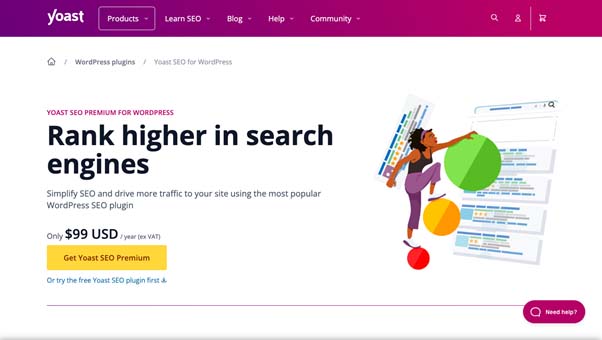
Conclusion
In conclusion, understanding keyword density and its importance in SEO is essential for website owners aiming to improve their online visibility. By strategically incorporating relevant keywords and their variants into content, while avoiding keyword stuffing, websites can attract more visitors and rank higher in search engine results.
Utilizing keyword density tools further streamlines this process, providing valuable insights to fine-tune content for optimal performance. Moreover, plugins like Yoast SEO offer practical solutions for WordPress users to enhance their site’s SEO effortlessly. Embracing these principles and tools empowers website owners to navigate the ever-evolving digital landscape effectively, ultimately driving success in the competitive online arena.